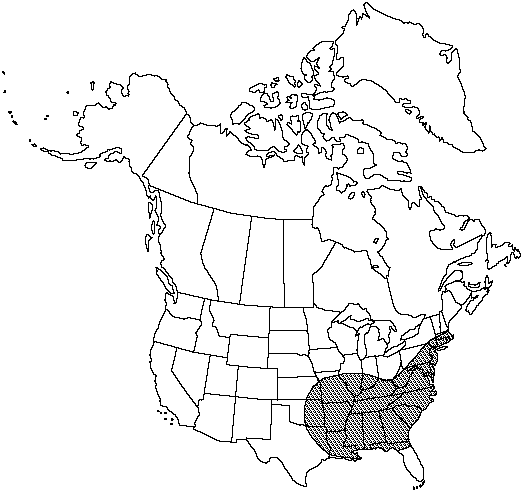FNA>Volume Importer |
FNA>Volume Importer |
| Line 26: |
Line 26: |
| | }}<!-- | | }}<!-- |
| | | | |
| − | --><span class="statement" id="st-d0_s0" data-properties="petiole some measurement"><b>Petiole </b>13–55 cm;</span> <span class="statement" id="st-d0_s1" data-properties="scale coloration;scale coloration;scale shape;scale length;scale width;scale shape">scales light-brown or brown, lanceolate, 6–9 × 2 mm, ± crisped.</span> <span class="statement" id="st-d0_s2" data-properties="blade shape;blade shape;blade shape;blade shape;blade atypical length;blade length;blade atypical width;blade width;blade shape;blade width;base position;apex shape;apex shape"><b>Blade </b>ovatelanceolate to lanceolate, 2-pinnate-pinnatifid, (18–) 25–60 × (5–) 10–30 cm, slightly narrowed proximally, broadest just above base to just below middle, apex acuminate or ± caudate.</span> <span class="statement" id="st-d0_s3" data-properties="pinna architecture;pinna shape;pinna shape;pinna shape;base architecture or shape;apex shape"><b>Pinnae </b>usually stalked, oblong-lanceolate to lanceolate, base truncate, apex acuminate.</span> <span class="statement" id="st-d0_s4" data-properties="pinnule shape;pinnule shape;pinnule shape;base shape;apex shape"><b>Pinnules </b>oblong-lanceolate to narrowly deltate, base unequally cuneate, apex ± acute.</span> <span class="statement" id="st-d0_s5" data-properties="rachis pubescence;rachis pubescence;costa pubescence;costule pubescence;gland coloration"><b>Rachis,</b> costae, and costules glabrous or with scales or pale glands.</span> <span class="statement" id="st-d0_s6" data-properties="sorus shape;sorus course;sorus shape;sorus shape"><b>Sori </b>elongate, straight or hooked at distal end or horseshoe-shaped;</span> <span class="statement" id="st-d0_s7" data-properties="">sporangial stalks with glandular-hairs;</span> <span class="statement" id="st-d0_s8" data-properties="indusium architecture or pubescence or shape;hair architecture;hair architecture">indusia ciliate, hairs glandular or nonglandular and ± as long as indusial width.</span> <span class="statement" id="st-d0_s9" data-properties=""><b>Spores </b>brown or dark-brown.</span> <span class="statement" id="st-d0_s10" data-properties="spore coloration;spore coloration;2n chromosome count">2n = 80.</span><!-- | + | --><span class="statement" id="st-undefined" data-properties=""><b>Petiole </b>13–55 cm; scales light brown or brown, lanceolate, 6–9 × 2 mm, ± crisped. <b>Blade</b> ovate-lanceolate to lanceolate, 2-pinnate-pinnatifid, (18–)25–60 × (5–)10–30 cm, slightly narrowed proximally, broadest just above base to just below middle, apex acuminate or ± caudate. <b>Pinnae</b> usually stalked, oblong-lanceolate to lanceolate, base truncate, apex acuminate. <b>Pinnules</b> oblong-lanceolate to narrowly deltate, base unequally cuneate, apex ± acute. <b>Rachis</b>, costae, and costules glabrous or with scales or pale glands. <b>Sori</b> elongate, straight or hooked at distal end or horseshoe-shaped; sporangial stalks with glandular hairs; indusia ciliate, hairs glandular or nonglandular and ± as long as indusial width. <b>Spores</b> brown or dark brown. <b>2n</b> = 80.</span><!-- |
| | | | |
| | -->{{Treatment/Body | | -->{{Treatment/Body |
| Line 54: |
Line 54: |
| | |publication year=1923 | | |publication year=1923 |
| | |special status= | | |special status= |
| − | |source xml=https://jpend@bitbucket.org/aafc-mbb/fna-fine-grained-xml.git/src/287ef3db526bd807d435a3c7423ef2df1e951227/V2/V2_282.xml | + | |source xml=https://jpend@bitbucket.org/aafc-mbb/fna-data-curation.git/src/9216fc802291cd3df363fd52122300479582ede7/coarse_grained_fna_xml/V2/V2_282.xml |
| | |genus=Athyrium | | |genus=Athyrium |
| | |species=Athyrium filix-femina | | |species=Athyrium filix-femina |
| | |variety=Athyrium filix-femina var. asplenioides | | |variety=Athyrium filix-femina var. asplenioides |
| − | |2n chromosome count=80
| |
| − | |apex shape=acute;acuminate;caudate;acuminate
| |
| − | |base architecture or shape=truncate
| |
| − | |base position=middle
| |
| − | |base shape=cuneate
| |
| − | |blade atypical length=18cm;25cm
| |
| − | |blade atypical width=5cm;10cm
| |
| − | |blade length=25cm;60cm
| |
| − | |blade shape=narrowed;2-pinnate-pinnatifid;ovatelanceolate;lanceolate
| |
| − | |blade width=broadest;10cm;30cm
| |
| − | |costa pubescence=glabrous
| |
| − | |costule pubescence=glabrous
| |
| − | |gland coloration=pale
| |
| − | |hair architecture=nonglandular;glandular
| |
| − | |indusium architecture or pubescence or shape=ciliate
| |
| − | |petiole some measurement=13cm;55cm
| |
| − | |pinna architecture=stalked
| |
| − | |pinna shape=oblong-lanceolate;lanceolate
| |
| − | |pinnule shape=oblong-lanceolate;narrowly deltate
| |
| − | |rachis pubescence=with scales or pale glands;glabrous
| |
| − | |scale coloration=brown;light-brown
| |
| − | |scale length=6mm;9mm
| |
| − | |scale shape=crisped;lanceolate
| |
| − | |scale width=2
| |
| − | |sorus course=straight
| |
| − | |sorus shape=horseshoe-shaped;hooked;elongate
| |
| − | |spore coloration=dark-brown;brown
| |
| | }}<!-- | | }}<!-- |
| | | | |
| | -->[[Category:Treatment]][[Category:Athyrium filix-femina]] | | -->[[Category:Treatment]][[Category:Athyrium filix-femina]] |
Petiole 13–55 cm; scales light brown or brown, lanceolate, 6–9 × 2 mm, ± crisped. Blade ovate-lanceolate to lanceolate, 2-pinnate-pinnatifid, (18–)25–60 × (5–)10–30 cm, slightly narrowed proximally, broadest just above base to just below middle, apex acuminate or ± caudate. Pinnae usually stalked, oblong-lanceolate to lanceolate, base truncate, apex acuminate. Pinnules oblong-lanceolate to narrowly deltate, base unequally cuneate, apex ± acute. Rachis, costae, and costules glabrous or with scales or pale glands. Sori elongate, straight or hooked at distal end or horseshoe-shaped; sporangial stalks with glandular hairs; indusia ciliate, hairs glandular or nonglandular and ± as long as indusial width. Spores brown or dark brown. 2n = 80.
Habitat: Moist woods, thickets, swamps
Elevation: 10–2000 m
Distribution
Ala., Ark., Conn., Del., Fla., Ga., Ill., Ind., Kans., Ky., La., Md., Mass., Miss., Mo., N.J., N.Y., N.C., Okla., Pa., R.I., S.C., Tenn., Tex., Va., W.Va.
Discussion
Selected References
None.
